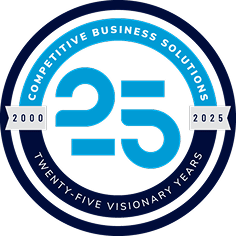
Why Do 70% of Lean Transformations Fail?
SOLUTION AREA: Program and Project Management
If failure is the best teacher, most leaders attempting Lean transformation have earned PhDs. Successful, sustainable change begins by identifying and prioritizing grass-roots issues that truly drive improvements across your organization.
Four core “must-do” principles are essential to assure long-term success. For executives who want to create a real-world competitive advantage for their businesses, these indispensable ingredients will help you leap barriers to create successful, sustainable turnarounds to Lean transformation.
1. Pursue perseverance
Never take your foot off the pedal. Like a car engine, Lean needs constant attention, oversight and maintenance to perform at its best. But, in reality, many believe Lean simply becomes part of a company’s DNA, or they think about Lean as nothing more than “tools.” Without continual guidance and responsiveness, your Lean system quickly begins to break down. Think of Lean as an ongoing pursuit toward perfection. This is one of James Womack’s tenants that is not quite understood. If there isn’t an unwavering pursuit for the elimination of all waste, then the culture will be one of tolerance, which creates an inevitable backslide.
2. Become a problem-solver
It sounds simple, but overwhelmingly, companies that maintain the Lean journey are great problem-solvers. You can teach problem-solving, but a cultural element must become a core element. Ask yourself: Is your team constantly asking probing questions to get to the root causes of key issues? Are they taking effective—and corrective—measures to resolve the problems permanently? Too often the answer is no. Simply stated, the best problem-solvers have the best results.
3. Be good listeners
The top companies for customer service have one thing in common: They listen to customers and respond to their needs. Your executive teams and employees are your customers. For Lean success, do more listening than talking. Companies that listen to their customers and their employees have a much better chance of being successful. Too often a communications plan is a top-down messaging campaign and not a two-way dialogue.
4. Engage and empower your workforce
Most companies struggle with engagement and empowerment. Here’s a key example: CBS worked with a client doing Kaizen events, but it took a full two months to finally get shop-floor operators to attend. For this exercise, an operator designed, built and implemented new fixturing to improve quality and increase output to better meet customer demand. The operator experienced something new: “After 30 years, this was the best week of my career.” What inspired her comment? Since she was fully empowered to do the improvement, she found a new passion for the work. In contrast, if she was merely allowed to identify the need and then someone else took the action to resolve it, she would have been less empowered and would feel much less rewarded. In the end, she drove the changes in the shop because she was both passionate and intimately knowledgeable about why and what to do to achieve production targets. She became a valued leader in the organization.
The journey to Lean begins with these small steps. Whatever challenge your organization is addressing, long-term transformation and success are within your reach. Persevere, solve problems, listen and empower your workforce so you can achieve quantifiable outcomes.
Latest Insights
Sign up to receive our latest insights!
"*" indicates required fields




